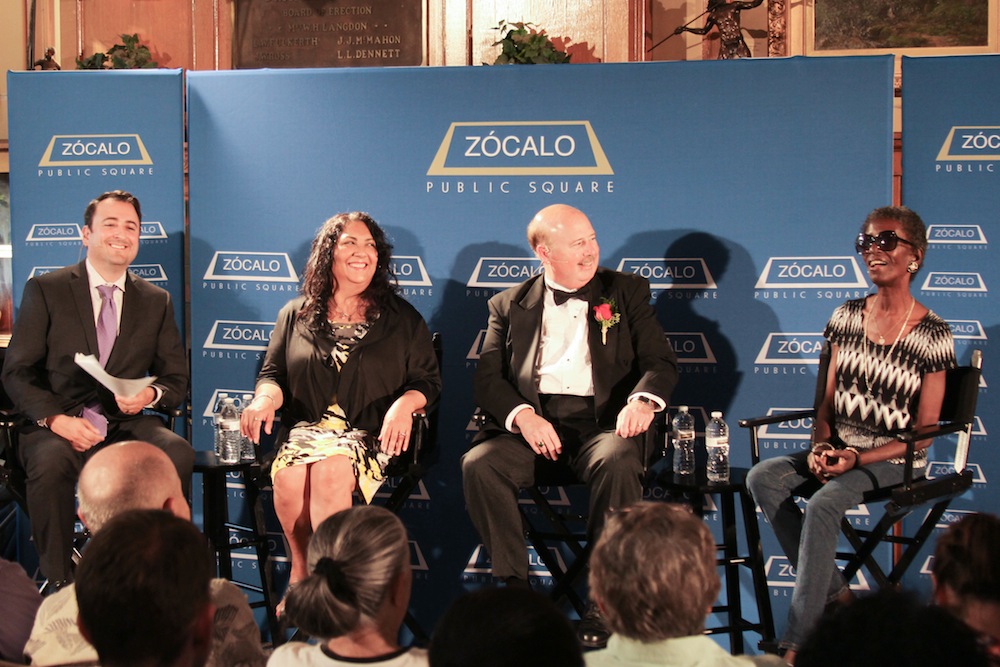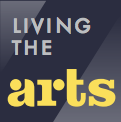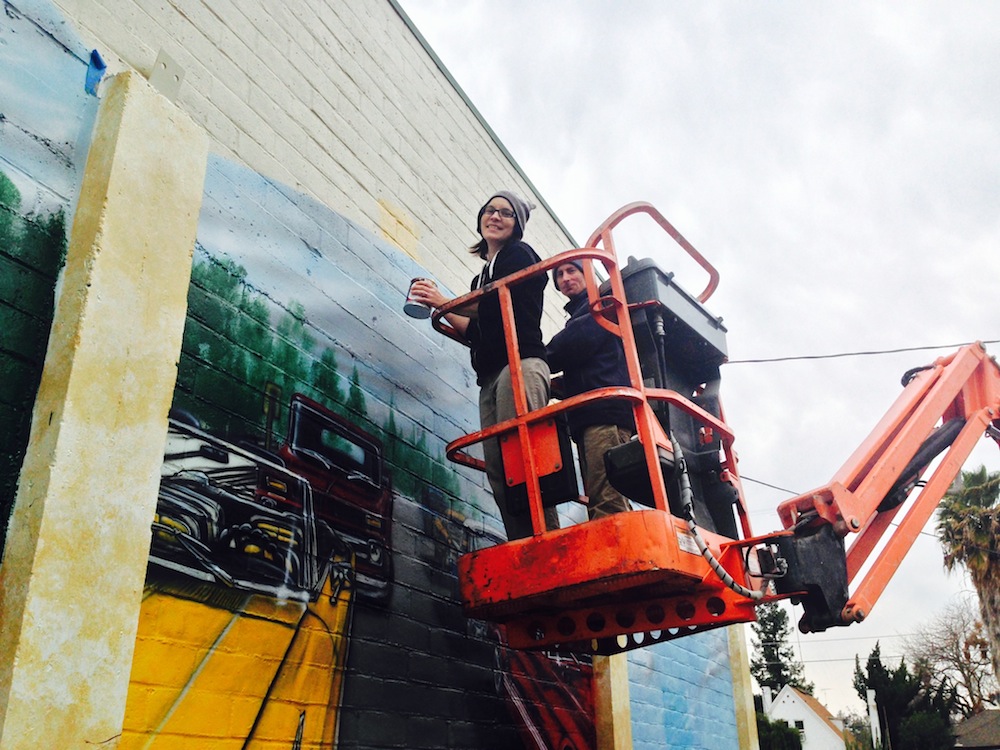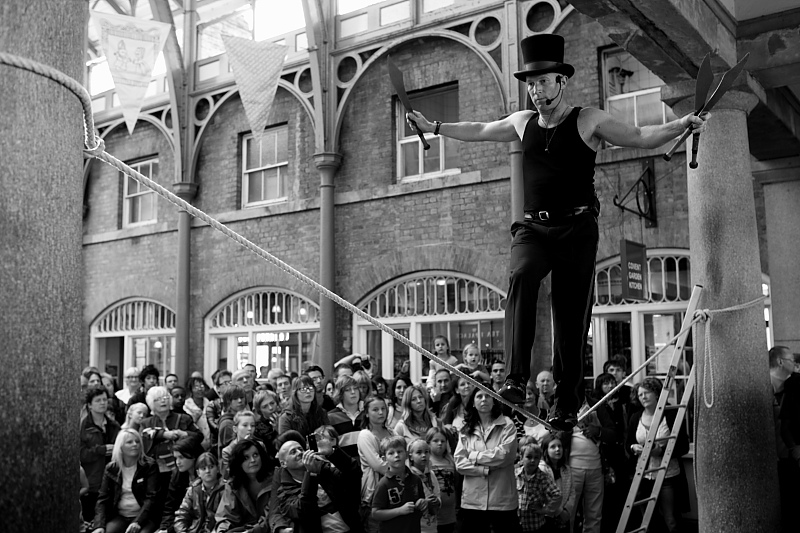
How do you engage a community in the arts—especially when resources, attention spans, and time are all limited? A panel of local musicians addressed this question and others at a “Living the Arts” event co-presented by the James Irvine Foundation in front of a full house at the McHenry Museum in Modesto.

Every Thursday night in the summer, Modesto’s MoBand plays for thousands of people, free of charge. There are community bands all over the country. Modesto Bee editor Joseph Kieta, the evening’s moderator, asked MoBand director George Gardner: “What’s the secret sauce? What makes MoBand so special for this community?”
A lot of things have grown on their own, Gardner answered modestly. But he believes that the quality of music in Modesto has something to do with it, supported by a robust teaching program in the school system.
MoBand’s structure is also key to its success. Its musicians come out and perform for free. The group has an open-door policy where no one has to audition, and there’s no ranking, or “chair,” system. That could cause chaos, but it doesn’t.
“We get a good instrumentation, and the people balance the sections out,” said Gardner, adding that MoBand doesn’t draw people who want to be top dog but people who are oriented to making the group sound good. And they feed on the size of the crowd. “It’s a combination of the community and the musicians in the community,” he said.
Dellanora Green, who has made a living singing on the streets of Modesto for a decade, also credited the community for its support. “I love the people here,” she said.
But what, asked Kieta, can be done to make Modesto’s arts community better?
Green said that local arts facilities like the Gallo Center for the Arts bring great audiences to Modesto, but the city can do more for street musicians. In recent years, panhandlers have made performing difficult for her, for example.
Patty Castillo Davis, a singer-guitarist who is involved in a number of local arts organizations, said that Modesto has done a good job of using its top-notch facilities to bring in high-caliber national performers. Not only do audiences benefit, but local artists see “something to aspire to.”
“We want to play those places as well,” she said.
Local restaurant and club owners are also trying to support musicians, she added, but that support hinges on the economy and the bottom line.
Kieta asked the panelists to talk about the state of arts education locally. Gardner said that arts education in schools depends on finances as well as where the priorities are. In his 40 years as a music teacher in Modesto’s schools, he said, there were superintendents and school boards who supported the arts. And then there were also those who didn’t care if arts were in the curriculum, as long as the football team kept winning. Finances are currently structured so that there’s very little art in public schools. Many districts have dropped their music program, but Modesto hasn’t—and that’s something to be applauded, he said.
Castillo Davis said that outside the schools, there are opportunities for those who are looking to get children involved in the arts—from bringing kids to hear MoBand to connecting them to Modesto Sound, an organization with a recording facility they can use for free. A lot of responsibility lies with adults in the community. When she was a parent of children in the Ceres Unified School District, she was writing checks every week for different musical groups in the schools.
The arts cost. Given that none of the panelists are in their professions for the money, where, asked Kieta, do they derive the inspiration to keep providing opportunities for the community to enjoy and make art?
“I know my voice isn’t going to last forever,” said Castillo Davis. “I need to have nice footprints, and leave things better than they are.”
Gardner said that teaching has been unexpectedly satisfying. When he was as a young musician, older people told him to get his teaching credentials as something to fall back on if his performing career didn’t work out. “I started something I thought would be neat for me,” he said. “And it turned around and was neat for kids.”
For Green, sharing the arts can easily make one evangelical. “I want to be a gospel singer,” she said. “I love to bring people joy when I sing.”
In the audience question-and-answer session, guests applauded the eclectic crowd and the many opportunities for people of all ages and skill levels to participate in the arts in Modesto. One audience member recalled moving to the city in 1976 and attending MoBand concerts with small crowds that have mushroomed over the past few decades. What city policies, she asked, help your organizations succeed?
Gardner said that the city provides the park where MoBand plays, the police and emergency medical services, and the sound system—and pay the electric bill.
Shortly thereafter, the panel concluded, and Gardner headed to nearby Graceada Park. He had a show to put on, and an audience to entertain.






Send A Letter To the Editors